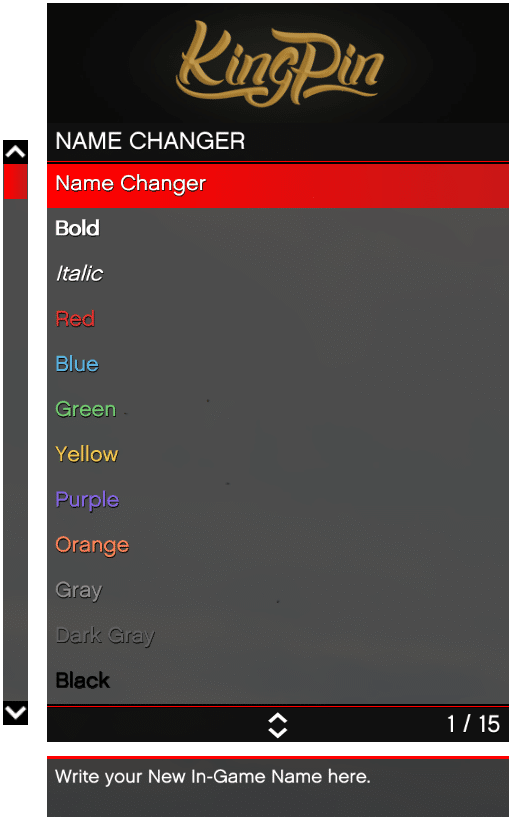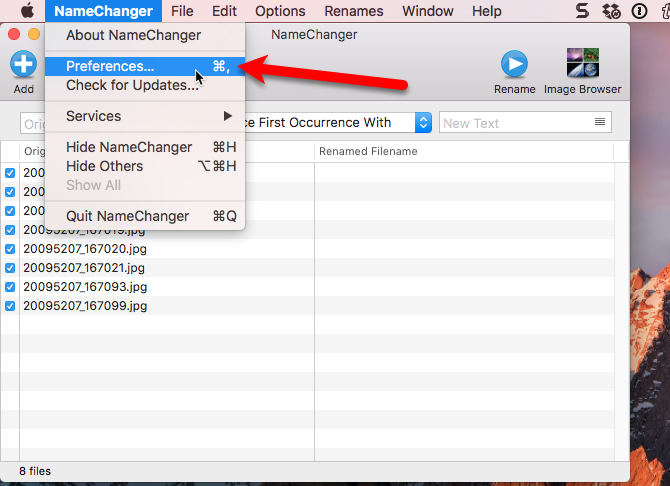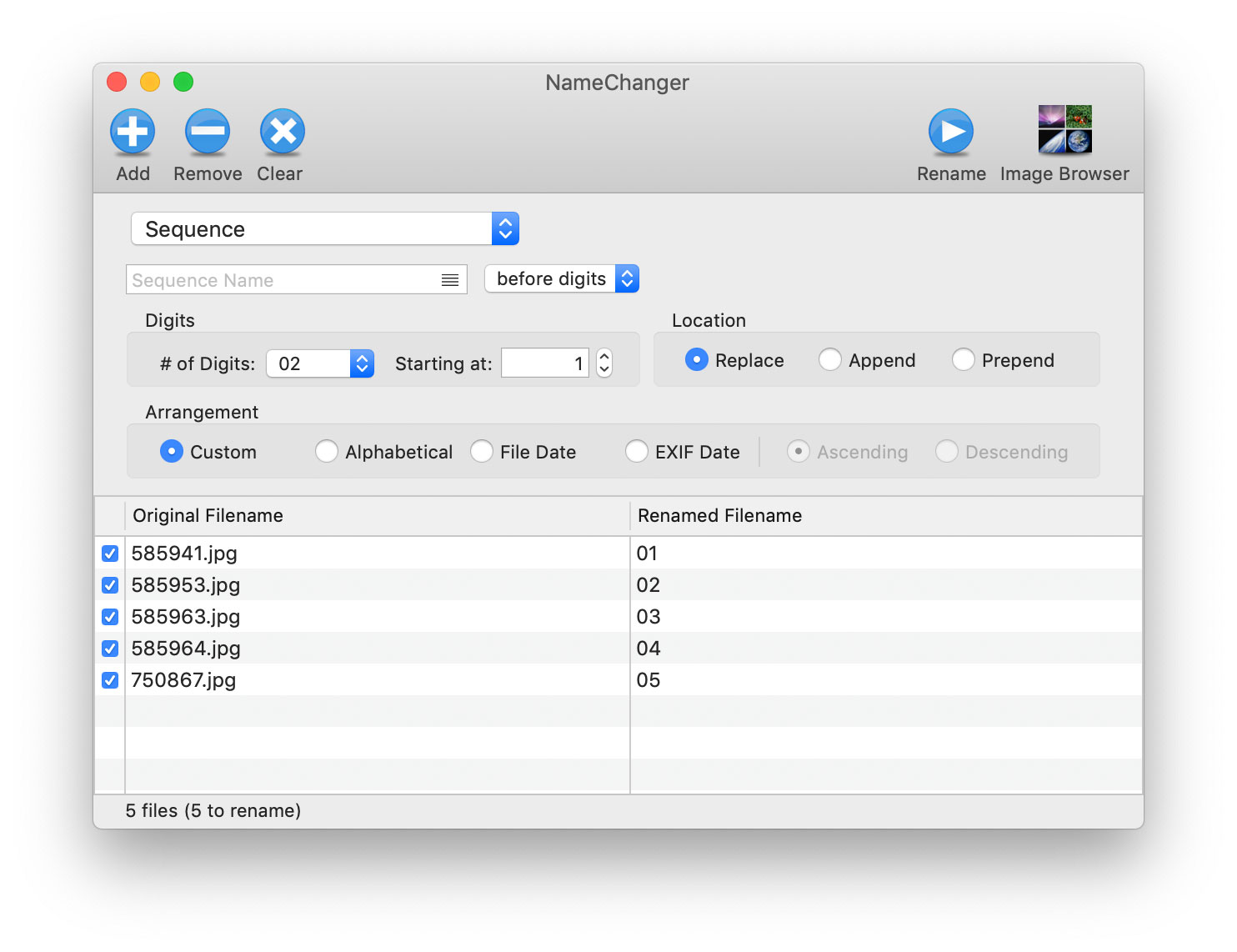The NameChanger minifilter grafts a directory from one part of a volume's namespace to another part using a mapping. The minifilter maintains this illusion by acting as a name provider, injecting entries into directory enumerations and forwarding directory change notifications. Change your name the easy way. The name change process used to be time-consuming and complicated. Now, it's simple. With our advanced form preparation software and guidance, changing your name is fast and easy.
-->
The NameChanger minifilter grafts a directory from one part of a volume's namespace to another part using a mapping. The minifilter maintains this illusion by acting as a name provider, injecting entries into directory enumerations and forwarding directory change notifications.
Build the sample
You can build the sample in two ways: using Microsoft Visual Studio or the command line (MSBuild).
Building a driver using Visual Studio
You build a driver the same way you build any project or solution in Visual Studio. When you create a new driver project using a Windows driver template, the template defines a default (active) project configuration and a default (active) solution build configuration. When you create a project from existing driver sources or convert existing driver code that was built with previous versions of the WDK, the conversion process preserves the target version information (operating systems and platform).
The default Solution build configuration is Debug and Win32.
To select a configuration and build a driver
Open the driver project or solution in Visual Studio (find filtername.sln or filtername.vcxproj).
Right-click the solution in the Solutions Explorer and select Configuration Manager.
From the Configuration Manager, select the Active Solution Configuration (for example, Debug or Release) and the Active Solution Platform (for example, Win32) that correspond to the type of build you are interested in.
From the Build menu, click Build Solution (Ctrl+Shift+B).
Building a driver from the command line (MSBuild)

You can build a driver from the command line using the Visual Studio Command Prompt window and the Microsoft Build Engine (MSBuild.exe) Previous versions of the WDK used the Windows Build utility (Build.exe) and provided separate build environment windows for each of the supported build configurations. You can now use the Visual Studio Command Prompt window for all build configurations.
To select a configuration and build a driver from the command line
Open a Visual Studio Command Prompt window at the Start screen. From this window you can use MsBuild.exe to build any Visual Studio project by specifying the project (.VcxProj) or solutions (.Sln) file.
Navigate to the project directory and enter the MSbuild command for your target. For example, to perform a clean build of a Visual Studio driver project called filtername.vcxproj, navigate to the project directory and enter the following MSBuild command: msbuild /t:clean /t:build .filtername.vcxproj.
Installation
The minifilter samples come with an INF file that will install the minifilter. To install the minifilter, do the following:
Make sure that filtername.sys and filtername.inf are in the same directory.
Note
This installation will make the necessary registry updates to register the minifilter service and place filtername.sys in the %SystemRoot%system32drivers directory.
In Windows Explorer, right-click filtername.inf, and click Install.
To load the minifilter, run fltmc loadfiltername or net startfiltername.

Design and operation
The NameChanger minifilter illustrates how to make one part of a volume's namespace appear as though it belongs to part of another namespace. It accomplishes this by altering the names of files that reside beneath a particular path (called the 'real mapping') to appear as though they actually reside beneath a different path (called the 'user mapping'). The .inf file supplied with the sample defines the real and user mappings in the [Strings] section. The three strings used for the mappings are:
| String | Description |
|---|---|
| UserMapping | The location where files will appear to be in when the filter is attached. |
| UserMappingFinalComponentShort | The 'short' (DOS-compliant 8.3-format) name for the final component of the UserMapping path. |
| RealMapping | The actual location where the files reside. |
Before attaching the minifilter to a volume, you must set up the user and real paths. By default the .inf defines the mapping paths like in the following manner:
| String | Mapping |
|---|---|
| UserMapping | 'XY' |
| UserMappingFinalComponentShort | 'Y' |
| RealMapping | 'AB' |
To successfully attach the filter to a volume you must first create a couple of directories. For example, to attach the NameChanger minifilter to the F: volume, first create the RealMapping directory (the F:AB directory). Next, create the parent of the UserMapping path (the F:X directory). The following directories are be created:
F:AB
F:X
Once this is done the NameChanger filter should successfully attach to F:. It will change the directories you created to appear like the following:
F:A
Rhythm Heaven DS Remix 8 But Attempted On DeSmuME
F:XY
After the minifilter attaches, the 'B' subdirectory of F:A is no longer visible. Its contents now appear under the 'Y' subdirectory of F:X.
For more information on file system minifilter design, see File System Minifilter Drivers.
Google uses cookies and data to:- Deliver and maintain services, like tracking outages and protecting against spam, fraud, and abuse
- Measure audience engagement and site statistics to understand how our services are used
- Improve the quality of our services and develop new ones
- Deliver and measure the effectiveness of ads
- Show personalized content, depending on your settings
- Show personalized or generic ads, depending on your settings, on Google and across the web
 For non-personalized content and ads, what you see may be influenced by things like the content you’re currently viewing and your location (ad serving is based on general location). Personalized content and ads can be based on those things and your activity like Google searches and videos you watch on YouTube. Personalized content and ads include things like more relevant results and recommendations, a customized YouTube homepage, and ads that are tailored to your interests.
For non-personalized content and ads, what you see may be influenced by things like the content you’re currently viewing and your location (ad serving is based on general location). Personalized content and ads can be based on those things and your activity like Google searches and videos you watch on YouTube. Personalized content and ads include things like more relevant results and recommendations, a customized YouTube homepage, and ads that are tailored to your interests.NameChanger V2.2.2 OS X 10.5 (Leopard)
Click “Customize” to review options, including controls to reject the use of cookies for personalization and information about browser-level controls to reject some or all cookies for other uses. You can also visit g.co/privacytools anytime.
